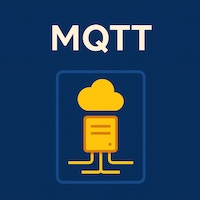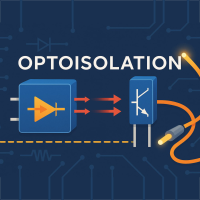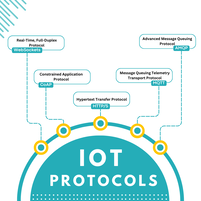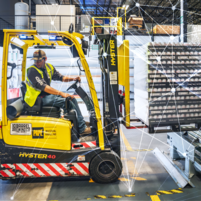What are some examples of IoT Devices?


IoT was coined by the famous Kevin Ashton, who is credited with coining the phrase "Internet of Things." Despite this, the global adoption of the Internet of Things didn't begin until Gartner's 2011 list of emerging technologies. Over half of the 21.7 billion active and connected devices expected by 2021 will be IoT devices, with an estimated 11.7 billion (or 54%) currently in use. According to this statistic, there is more Internet of Things devices than non-Internet of Things devices.
What is the Internet of Things?
"Things" are the billions of physical objects that are connected to the Internet under the umbrella term of the Internet of Things (IoT). These "things" use the Internet to acquire and share data with other devices and systems.
This technology, dubbed "the Internet of Things" (IoT), has been present since the 1990s; however, subsequent advancements in a range of other fields include as
- The availability of sensors with reasonable prices and high reliability.
- An increase in the number of cloud-enabled computers.
- AI and machine learning advancements in the last several years
Internet-connected devices may range from everyday items like household appliances to high-tech gear seen in manufacturing facilities. Internet of Things (IoT) devices each have a unique identifier (UID) and may communicate data without the need for human interaction.
A wide variety of IoT devices may be found on the market.
The kind of Internet of Things application being utilized significantly impacts the protocols used for networking, communication, and connectivity. In the same way that there are many different types of Internet of Things devices, there are many kinds of Internet of Things applications. A few of the more common examples are as follows:
Internet of Things for consumers
It is designed primarily for everyday use. Voice-activated assistants, home appliances, and light fixtures are all examples of this technology.
Internet of Things (IoT) for commercial purposes
It is mainly used in the healthcare and transportation industries. Intelligent pacemakers and monitoring systems are two examples.
The Internet of Military Things, or IoMT, is a term that refers to the usage of Internet of Things (IoT) technology in the military. Human-wearable biometrics and surveillance robots are two examples.
When used in industrial settings, such as those in the energy and manufacturing sectors, IIoT stands for "Industrial Internet of Things." Digital control systems, intelligent agriculture, and big data in business are a few examples.
IoT Infrastructure is mainly utilized in smart cities to link devices. Infrastructural sensors and management systems are examples of this kind of technology.
Why is the Internet of Things important?
Connecting the digital and physical worlds is now possible because of Internet of Things technology. For businesses, it offers various benefits in terms of automating and simplifying day-to-day activities.
As the Internet of Things (IoT) continues to develop exponentially, businesses are capitalizing on the immense economic advantages it can give. An extensive list of the significant benefits provided by IoT may be seen below:
By getting data-driven insights from the Internet of Things (IoT) data to increase commercial decisions and improve the efficiency and productivity of company operations
To improve customer satisfaction
A survey by IDC predicts that IoT spending would grow at a CAGR of 11.3 percent throughout the 2020-2024 forecast period, notwithstanding the economic effect of the COVID-19 pandemic.
Internet of Things (IoT) devices include things like sensors, appliances, and other hardware. The Internet is used to collect and distribute data from these devices. They may be used in conjunction with other Internet of Things devices and are pre-programmed for a specific use case. The Internet of Things (IoT) may monitor traffic conditions ahead of you and alert the person you're meeting that you're likely to be late, for example.
Each Internet of Things (IoT) gadget has a specific purpose.
Even though each Internet of Things device serves a distinct purpose, they are all functionally equivalent in many ways. To begin with, Internet of Things devices are physical objects that can monitor and respond to real-world events. They frequently link to a Dynamic Host Configuration Protocol server and have a central processing unit, network adapter, and firmware incorporated within the device itself. An IP address is required for it to function on the network.
Software programs are used to operate and configure the vast majority of IoT devices. A smartphone app that enables you to control the lights in your home is an example. There is no longer a need to install additional programs since various gadgets come pre-installed with web servers. For example, you don't have to do anything to turn on the lights when you enter a room.
Here are a few examples of IoT devices:
Home Security Measures
Intelligent and secure houses are increasing thanks to the Internet of Things. The Internet of Things (IoT) links various sensors, lighting, alarms, and cameras to offer round-the-clock security and protection.
Wearable Activity Monitors
Security cameras that deliver real-time alerts and real-time peace of mind are a great combination. Activity trackers are sensor-based devices that can measure and transmit real-time data on a person's critical health markers. Blood pressure, heart rate, appetite, and physical activity are all things you can keep tabs on.
In the Workplace, Safety, and Security
Cameras, sensors, and detection systems enabled by the Internet of Things may be used to monitor specific areas. Pressure buildups and tiny leaks of potentially dangerous chemicals may be seen and remedied before they become severe problems.
Technology for augmented reality in the form of wearable computers
Wearable computer-enabled glasses, known as Augmented Reality (AR) glasses, are worn by the user and allow them to add extra information to the user's perspective of the real world, such as 3D animations and videos. By using glasses with built-in screens, users can access Internet applications.
Infrared detection of motion
For example, motion sensors may pick up vibrations in large-scale infrastructure (e.g. large-scale buildings or bridges). Unevenness and disruptions in buildings may be detected by these devices, which can lead to catastrophic collapses if not addressed. There are also areas where earthquakes, landslides, and floods are common.
Top 5 Most Popular IoT Devices in 2022
1. Google Home Voice Controller
One of the most extensively utilized Internet of Things devices is the Google Home voice controller. A broad range of services, including alarms, lighting, and thermostats, may be controlled via voice commands.
2. Amazon Echo Plus Voice Controller
The Echo Plus voice controller from Amazon is another popular and trustworthy Internet of Things device. Among the many voice-enabled functions available to users include looking up the weather, setting timers and alarms, and taking phone calls.
3. August Doorbell Cam
The August Doorbell Cam, an Internet of Things device, allows customers to answer their door from afar. It constantly monitors the area surrounding your front entrance and captures any movement or strange activity.
4. August Smart Lock
As a proven IoT security solution, the August Smart Lock allows clients to manage and monitor their doors remotely. In addition to deterring would-be intruders, it offers an extra degree of security to your home.
5. Foobot
An Internet of Things device called Foobot can accurately measure pollution levels in a building. It improves the air quality in places where people spend a lot of time inside, such as offices, restaurants, and coffee shops. Watch the video below to learn more about the Internet of Things and how it works.
Unlimited Possibilities with IoT
It's too early to tell how far the Internet of Things (IoT) will go in the future, but current predictions are cautiously hopeful. In the next several years, we will be connected in ways that are now unimaginable but will become routine shortly. The Internet of things and artificial intelligence will allow us to think creatively and create new applications in various industries.
Explore more
Need any help in IoT?
Need any help in IoT? An Atreyo expert identify the right solution for your needs.
If ready to talk to an Atreyo expert
Interested in IoT products? go to






